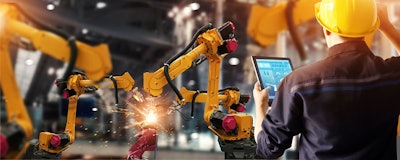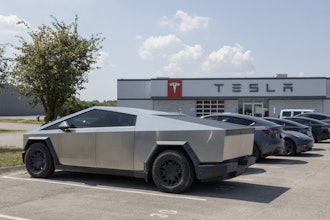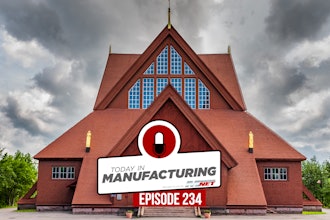
 Glenn Graney
Glenn GraneyBy now, I’m sure you’ve heard a lot about Industry 4.0. Has this become ‘old news’ in the world of manufacturing? I have read some recent articles that have already moved past the discussion around Industry 4.0 and on to discussing how machines and the human brain can be directly linked, or how there will be a rise of virtual think tanks to fill the void of actual employees. I have met industry leaders that have crossed out Industry 4.0 from their business cards. It feels like we have become bored with the original premise, are disappointed with the speed and magnitude of results and need something new to talk about. But before we completely abandon the intriguing promise of Industry 4.0, I think that we should stop and EAT.
Embedded Advanced Technology
So, what is EAT? EAT is an acronym I invented that stands for Embedded Advanced Technology. Who doesn’t like to EAT?
The individual Advanced Technologies associated with Industry 4.0 such as the Internet of Things (IoT), Machine Learning, Data Lakes, 3D Printing, Robotic Process Automation (RPA), Augmented Reality and others are well-documented. All of the promises of these Advanced Technologies are still available. The reporting of wild successes and radical changes has not yet matched the hype. It is vital to keep in mind that all advanced technology is only of interest if it provides some value. EAT delivers on this promise by being embedded in a set of capabilities that actually delivers value. Technology for technology’s sake is a formula for disappointment. Too many initiatives start with the named technology and not the application.
I am less interested in Machine Learning as a concept and much more interested in Enterprise Resource Planning (ERP) demand forecasts that use Machine Learning to provide fresh data-driven insights for the planning function. IoT has been the poster child for misalignment and disappointment. The connectivity element of IoT can be a siren song. There are innumerable assets and resources that can now be connected via inexpensive sensors and wireless communication. Connectivity and data collection is only the first mile on the IoT journey. The benefit comes from the outcome that this new data set can support. I am less interested in IoT connectivity and much more interested in IoT delivering live values from the factory floor that result in planners making more informed decisions based on real-world views of equipment performance and availability.
Capability vs. Possibility
In some ways, talking about these technologies as the critical center of initiatives have slowed their adoption. It can feel like we have a magic potion without a distinct ailment or problem on which to use it. Should a manufacturer really have to study Machine Learning and AI as concepts and translate them into use cases? It is particularly difficult for a manufacturer to sort through the pure technology vendors who claim to have bottled the magic. So many of the technology offerings are described more like tool kits that allow “you” to use the technology to solve any problem. The emphasis in that proposition is the “you” and the burden of the translation may be difficult for many manufacturers to bear. Manufacturing firms would much rather invest in a “capability” over a “possibility.” Manufacturers have trouble justifying investment in possibilities.
I still fervently believe that all of the technologies will have a major impact on manufacturing, and Industry 4.0 is for real. I do think that it is more likely that many of these technologies will find their way into manufacturing embedded in the applications that are already vital to their planning and operational functions. ERP vendors will deliver RPA as a systemic process improvement tool. Asset management vendors will deliver machine learning in pursuit of true predictive maintenance algorithms. In many instances, technology may be invisible to the manufacturer.
An obvious example from the consumer goods market is facial recognition and other AI functions that are already in each of our smartphones. None of us sat around the dinner table and announced an AI initiative. Few of us have any idea about how it works or what actual technology is at play. All of us benefit from the embedded advanced technology that found its way to us. After all, isn’t the point of gathering around the dinner table to EAT?
Glenn Graney is a director of industrial and high tech at QAD.






















